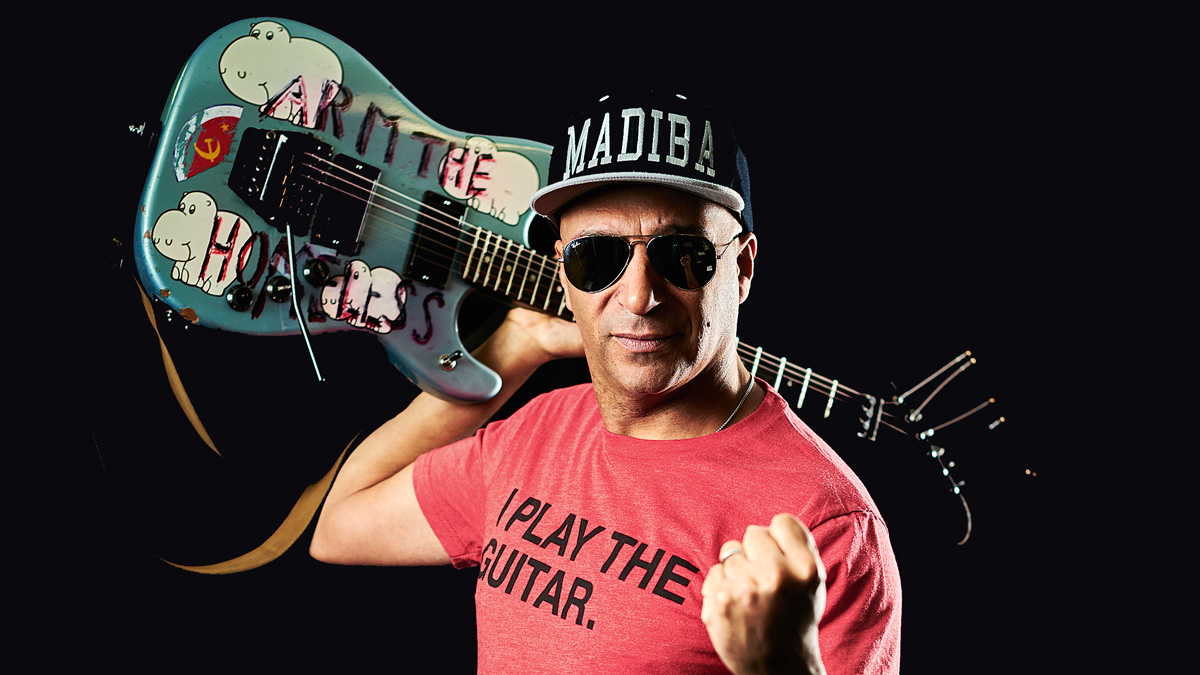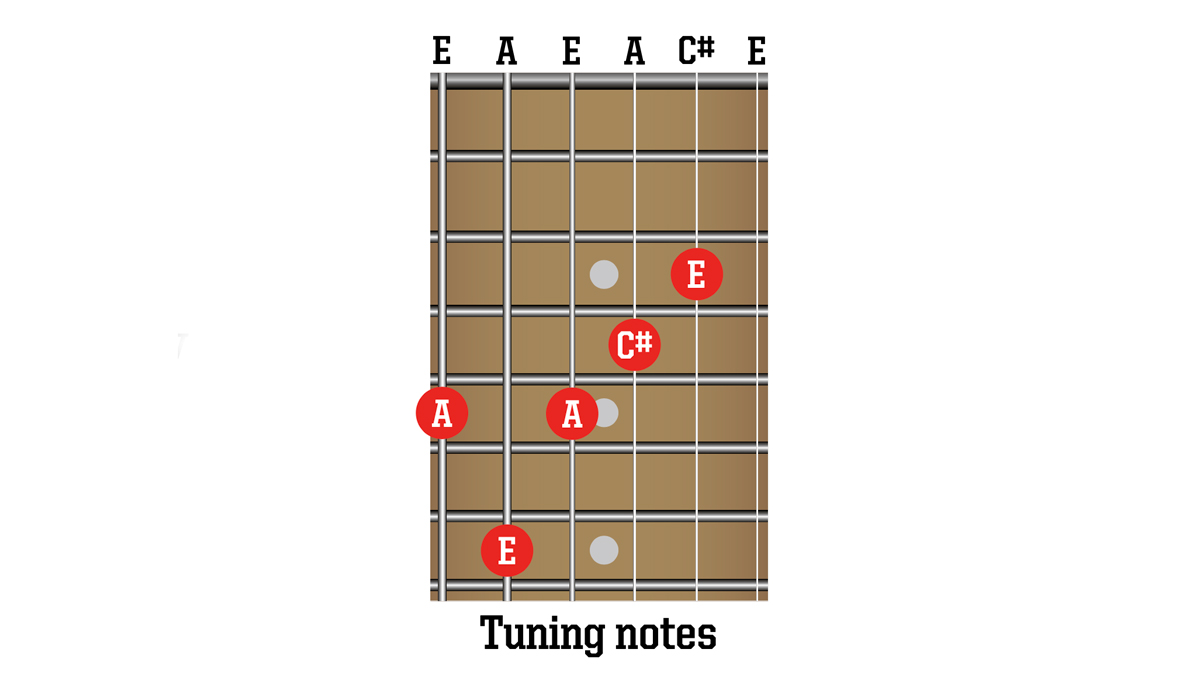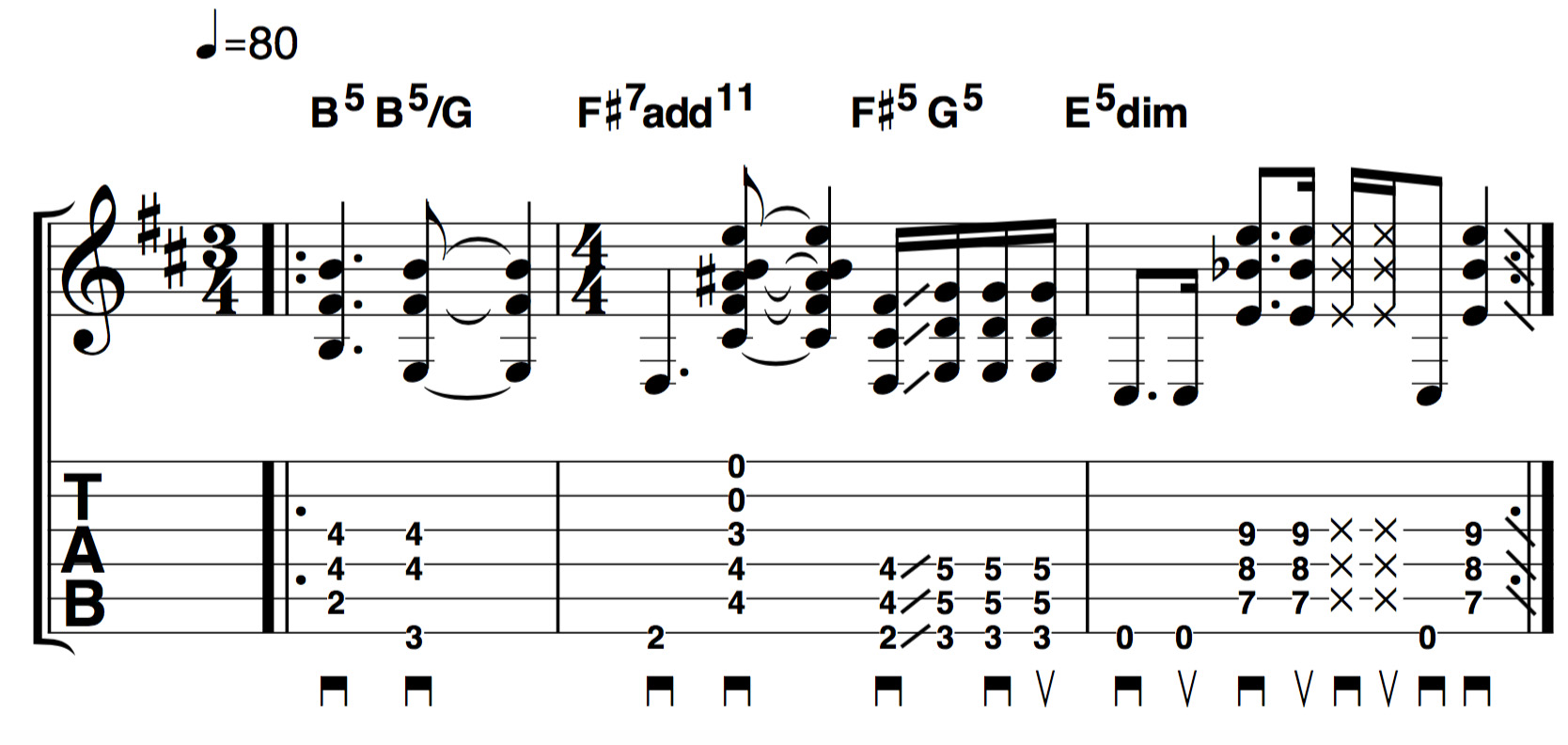The 100 greatest guitarists of all time
A comprehensive rundown of the best guitarists of all time, featuring the trailblazers, the early innovators, the best jazz, rock, indie, blues, metal and acoustic players – and the top guitarists around today...
The best alternative and indie guitarists of all time

1. Johnny Marr
The most influential guitarist of his generation on his evolution from The Smiths to Electronic and Modest Mouse, and why the shortest solos are the best. As told to TG’s Henry Yates
The Early '80s
“Guitar culture had many crimes and criminals. There was some good stuff, but the art of the song had disappeared. Pop had become very manufactured. Rock was about virtuosity, and machismo was lurking everywhere, or else it was about ‘groove’, which often implies a fear of chord changes. I’ve tried to wipe out the memories of poodle-cuts, but The Smiths was definitely a reaction.”
To Solo or Not to Solo
“When people talk about a ‘guitar solo’, they’re generally talking about a pentatonic break in classic rock, and it does imply a certain thoughtlessness and showboating. But actually, when I think about it, it can be an opportunity to do something beautiful, interesting or violent. There are plenty of guitar breaks that I absolutely love, like I Can’t Explain [The Who], or The Last Time by The Rolling Stones. They’re interesting because they’re little 10-second bursts of pop art, and when I have done solos that’s been my approach.”
Layering
“One of the most insanely layered (Smiths songs) was Hand in Glove, which I think had 16 guitar tracks. This Charming Man has seven or eight. It’s gratifying that people are still working out those little bits and pieces that are on top, because it was worth me taking the time. These days I’m able to do it more with one part. I’m more technically proficient, I guess.”
All the latest guitar news, interviews, lessons, reviews, deals and more, direct to your inbox!
Modest Mouse is my most mind-bending playing. It was like being thrown in the ocean
Johnny Marr
Recycling
“The Headmaster Ritual is interesting. It’s in open D with a capo on the 2nd fret, and it’s a combination of two riffs: one from before I joined the band, and another bolted on when I got this burst of inspiration a year later.”
Tapping
“Modest Mouse is my most mind-bending playing. It was like being thrown in the ocean. If you listen to Invisible, it’s crazy-busy and sounds like five guitars but it’s just me and Isaac Brock bumping into each other! On Fly Trapped In a Jar, people who don’t know me personally would be surprised to hear me playing that stuff. I play a tapping riff on Little Motel... The evidence is there!”
Evolving
“I’d have to live several lifetimes to be as good as I want to be. I once read an interview with someone who said you get to a certain point and never get any better. Playing guitar has always been the thing I love most in life, and that sounded like such a sad state of affairs. Luckily, that hasn’t been the case for me. I don’t think it ever will be.”
2. John Frusciante
From alt-rock to funk, Frusciante’s input helped take RHCP to a new level of stardom
Line-up changes can signal life or death for a band, but over their three-decades-plus career, the Chilis have always bounced back from personnel shifts with a new dynamic and refreshingly accessible sound.
Numerous guitarists have stepped in throughout the years to tour and record with the band, but, with John Frusciante back in the fold since December 2019, we’re seriously looking forward to the next album.
In the Mother’s Milk and Blood Sugar Sex Magik era, Frusciante would often eschew the Chilis’ trademark pure, hard funk 16th note rhythms to play with a raucous, grungy alt-rock edge.
3. Jack White
One of the biggest songs of its time saw guitarist Jack White’s guitar tuned to open A. You can play the mega-easy verse riff in any tuning, really – it’s in the chorus where open A comes into its own. Those slide guitar lines wouldn’t be possible in standard tuning.

4. Tom Morello
Tom tells us how to take the power back by making the most of our old gear…
“I was about 26 when I made that first Rage Against the Machine record, so I did have some experience behind me. In my late teens and early 20s, I really chased tone. I wanted to sound like Randy Rhoads or Nuno Bettencourt or Eddie Van Halen or Andy Gill, but I couldn’t make it sound like those guys.
The greatest grooves, the greatest riffs, heavy as can be... And played on a Telecaster?! Gain does not equal heaviness
Tom Morello
“I couldn’t afford any other gear, so one day I must have spent about five hours with my amp trying to make it sound the best that it could, marking all the settings as I went. It was a conscious and life-changing decision: ‘I’m not going to worry about tone ever again!’
“Instead, I’d just focus on creating music with the tone that I had and thought, ‘Okay, it looks like I’m stuck with this tone, so what kind of music does this tone make?’ All you have to do is listen to something like Led Zeppelin’s The Ocean. The greatest grooves, the greatest riffs, heavy as can be... And played on a Telecaster?! Gain does not equal heaviness. A huge riff doesn’t need gain, it needs deep groove and the right notes.”
5. Jonny Greenwood
It’s hard to play like Greenwood and it’s even harder to write like him. His parts aren’t confined to conventional shapes and patterns, so he produces arresting and unexpected sounds.
His most famous four seconds – the percussive stabs before the chorus of Creep – began as his attempt to ruin a song he hated, and ended up making the track.
For the rest of his career, he has been similarly fearless about shaking things up. He experiments freely with avant garde, modern classical and jazz influences, always either sidestepping clichés or recontextualising them so they sound fresh again.
6. J. Mascis
The Dinosaur Jr. man talks us through his favourite pedals
Electro-Harmonix Big Muff
“This one was made in 1976. I don’t know how much it’s worth, maybe up to $1000. It’s probably the most important pedal on my board because it’s where my distorted sound starts. I might add stuff on top of it but, the Big Muff is always in there. I got this on our first American tour in 1987, from a pawn shop in Arizona. Before that, I was using a Deluxe Big Muff, and for a while I used both – but as it turns out I liked this one better.”
Tube Works Real Tube Overdrive
“This is responsible for my main clean sound... It only has a little bit of drive dialled into it. I can turn down the volume and it still sounds really good. I like doing that so when I turn on the Big Muff it gets louder... Though with four amps, it’s always loud!”
Electro-Harmonix Mistress Flanger
“This was the first flanger I ever bought and I guess I love it because it sounds more extreme than most of the others I’ve heard!” '
7. Kurt Cobain
Three lessons that Kurt’s playing style and songwriting has taught us
Fill space and add tension by using chromatic notes
The Bleach album has a raw, high-energy punk-rock feel as delivered in songs such as Mr Moustache via Kurt’s constantly aggressive pick attack, developed with chromatic passing notes and palm-muted single-note riffing. ‘Chromatic’ simply means that some of the riffs are semitone-based runs, taking in notes from other keys and thus sounding less centred around the root note. Chromatics are a great way to generate a feeling of unease and unpredictability in your riffs.
Use softer dynamics to put focus on the vocal
Nevermind is full of dynamic shifts, often using clean guitars and a thinner arrangement during verses. This puts the focus on the vocals and leaves plenty of room for overdriven, powerful choruses. Lithium establishes this in its opening four-chord progression that ascends for the first three chords and descends on the last one (a pattern also used on Polly). Drain You and Smells Like Teen Spirit are similar but the third chord descends, instead of the fourth.
Employ dissonance to grab attention
The intro to Serve The Servants sets the tone of angst and unrest that permeates In Utero, thanks to the grating dissonance in the guitar and bass. This puts the listener on edge at these points and leaves a sinister undertone when returning to the more conventional verse and chorus sections. For an additional jarring effect, Cobain often ends phrases of the vocal melody with a note that clashes with the guitar chord he’s singing over.
8. Matt Bellamy
Muse’s Matt Bellamy has long been famous for his tech-loaded, forward-thinking approach to the electric guitar.
Need proof? Just check out his collection of Manson guitars where you’ll find features like the Roland GK MIDI pickup system, built-in effects pedals, LED lights, Fernandes Sustainer pickups, ribbon MIDI controllers, Kaoss pad controllers and plenty more.
Despite the high-tech sonic influences, Matt’s love of traditional classical music permeates Muse’s, er, musical output – and the harmonic minor scale is a great spot to get started.
The guitar parts in tracks such as Plug In Baby and New Born show Matt’s love of classical music. These lines tend to use arpeggios based within the harmonic minor scale (1 2 b3 4 5 b6 7). We’ve used Am and G#dim7 arpeggios mixed in with other melody notes from the key for a typical classically influenced sound.
9. Graham Coxon
The Blur six-stringer and solo artist on his unique, unconventional lead playing
Despite being one of Britpop’s most recognisable guitarists, Blur’s Graham Coxon has never enjoyed playing by the rules.
As Coxon tells TG: “I was listening to [2012 single] Meet+Drink+Pollinate the other day and had a mini-revelation that I do sort of booby-trap my own lead lines. But maybe that’s my skewed idea of melody. I couldn’t play scales and things.
“I think I’m more in the free-jazz world when it comes to lead playing, and I play physically. I like the sound of a guitar being thumped! I’d hear other people making rock albums that sounded really polished, but my records always sound like me: slightly shambolic and about to break. I cover my lack of technical ability with weird noises!”
10. Josh Homme
As it turns out, no one really knows how Josh Homme and Troy Van Leeuwen dial in their sound. The QOTSA brain trust keeps its own counsel on gear and tone.
But this much we know: Homme is a vintage gear aficionado, favouring guitars by Ovation, Maton and Motor Ave. He loves Ampeg’s VT series combos. Having played a Maton MS500 in the No One Knows video, we’d bet one would have been in the studio, too.
He’s a neck pickup guy but his tone is never muddy. There’s plenty of low-end, some overdrive crunch and a saucing of fuzz. Pedals such as the Stone Deaf PDF-1 add the dirt, the likes of the Fulltone Fat-Boost hold it together. Probably. Homme tunes down to C, so using a heavier gauge of string (0.011s should do it) will help those riffs cut through.
11. Jerry Cantrell
Unchained... The grunge and metal pioneer’s playing secrets unlocked
Though known as grunge pioneers, Alice In Chains are heavily influenced by metal and hard rock, with a sound that sets them apart from the loud-soft cliches of some other early-90s alt-rock acts.
A big feature of Jerry’s playing is dissonant harmony and a fondness for that staple metal scale, the Phrygian mode – take a listen to the main verse riff in Would? for an example. Try out our riff to get a little of Jerry’s magic in your playing.
There’s a great mix of some of Jerry’s favourite chords here – F#7add11 and E5dim will help you capture some essential AIC harmonies. Alice In Chains employ odd time in tracks such as Them Bones; count an eighth note pulse to keep time with the unusual feel of our 3/4 and 4/4 time change.
12. Billy Corgan
Corgan created guitar armadas, placing up to 40 guitar overdubs on a single track. These stuck out in an alternative scene that was competing to make the most lo-fi album. The Smashing Pumpkins’ defiantly massive orchestrations were inspired by the shoegaze scene and unfashionable pomp rockers like Queen and Boston.
He fully harnessed the Big Muff fuzz’s potential to create a wall of noise, and like his heroes Cheap Trick, created a sound that was equal parts rock fury and pop magic. When metal was a dirty word, Corgan embraced Sabbath and Van Halen, revealing an artist always unafraid to be himself.
13. Thurston Moore & Lee Ranaldo
One of New York’s most celebrated alternative bands, Sonic Youth championed alternate tunings for new alternative generation…
Speaking to Guitarist in 2015, Moore said: “When Sonic Youth first started, I didn’t feel like I needed to be at any level of playing to do what we had to do. Lee [Ranaldo] was more accomplished.
“He had actually been playing guitar in a way where he could work his way around a fretboard fairly well, but I was just instantly like, ‘F*ck it, I’m just going to put a drumstick under the 12th fret! We kind of started f*cking around a little bit with stuff on Confusion Is Sex [1983].
“And a lot of that was just based on the guitars we were using, like one just had four tuning pegs on it and four low strings. It wasn’t until after that that this tuning of F# F# F# F# E B happened, and that was the first real tuning that was sort of notated.
“I immediately started writing songs in it, like Brave Men Run and Death Valley ’69. Then we refined how things worked and worked with other tunings. Lee would either do something that was in unison or he would do something of his own invention that was complementary. It wasn’t discussed. It was just the way we were doing it.”
14. Kevin Shields
The original exponent of the giant pedalboard, the My Bloody Valentine guitarist has more tones at his feet on any given gig than anyone else has in their career.
Shields held onto his Jazzmaster’s tremolo arm constantly, meaning the chords slid in and out of tune as he strummed. The result, known as glide guitar, gave voice to the disaffected mood of British youth who felt equally unrepresented by the Conservative government and by mainstream rock.
Shields’ enormous, dissonant sound birthed the shoegaze scene and inspired the likes of Billy Corgan and Butch Vig, producer of Nirvana’s Nevermind.
15. Nick Valensi & Albert Hammond Jr.
Just when we needed it most, the Strokes made guitars raw again. Their debut arrived amid a sea of nu metal so overproduced it was difficult to detect human involvement.
The Strokes captured the excitement of five kids in a garage discovering rock ’n’ roll, and spawned an entire scene of bands called ‘The ...s’. Even shock rock godfather Alice Cooper was inspired to return to his garage rock roots.
The Strokes’ guitarists Nick Valensi and Albert Hammond Jr. had great interplay, each playing different parts to create a bigger whole without compromising their immediacy. Three chords, loud amps and total honesty win every time.
Also in the running…
Alex Turner
His lyrics may overshadow his playing, but the Arctic Monkey’s spikey guitar lines communicate his sentiments equally well.
Noel Gallagher
Perhaps only George Harrison has recorded more solos you can whistle...
Stone Gossard & Mike McCready
With their ingenious twin guitar parts, the Pearl Jam pair achieve sounds their heroes like Hendrix couldn’t achieve alone.
John Squire
90s England didn’t produce many guitar heroes, but the Stone Rose was one in the tradition of Beck and Page.
Bernard Sumner
Thanks to his work with Joy Division and New Order, there isn’t an indie kid in the UK he didn’t influence.
Kim Thayil & Chris Cornell
The Soundgardeners set themselves apart with unique tunings and somehow making riffs in 5/4 and 7/4 sound catchy.
Robert Smith
Goths, indie kids and alt-rockers try and fail to imitate him, partly because he purposely detunes his guitar by ear.
Dave Navarro
The 90s alternative scene wasn’t big on solos, but Navarro kept the fire burning with Jane’s Addiction and RHCP.
Peter Buck
The greatest non-Liverpudlian ever to plug a Rickenbacker into an AC30, Buck’s parts have distinguished REM’s catalogue.
Adam Jones
A stunningly creative and original part writer, Jones is known for his inventive use of delays and odd time signatures in Tool.
Stephen Malkmus
If only rock critics had voted, Malkmus would have dominated this poll – his band Pavement defined 90s US indie.
James Dean Bradfield
The Manics’ frontman gave us rock n’ roll and low-slung Les Pauls when such things were thin on the ground.
Black Francis & Joey Santiago
The Pixies basically invented a new chord progression, the mediant major, unheard in alt-rock before but now inescapable.
Current page: The best alternative and indie guitarists
Prev Page The best shred guitarists of all time Next Page The best guitarists in the world right nowJonathan Horsley has been writing about guitars since 2005, playing them since 1990, and regularly contributes to publications including Guitar World, MusicRadar and Total Guitar. He uses Jazz III nylon picks, 10s during the week, 9s at the weekend, and shamefully still struggles with rhythm figure one of Van Halen’s Panama.














